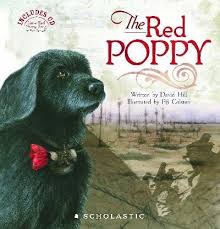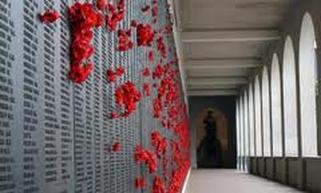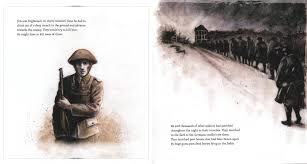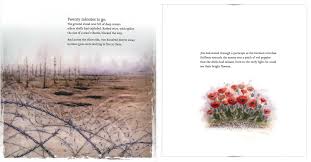Before Reading

Look at the front cover.
What clues do you gain from the title and the illustration on the cover as to what this story is about?
Why would the dog have a poppy in his/her collar? What could it be there for?
Where do you think this story takes place? Why would a dog be part of this story?
Where have you seen poppies before? Have you ever bought a poppy for Remembrance Day? What does it symbolise? What does it help us to do?
When you are in Year 6 you will visit the National War Memorial in Canberra and you will place a poppy next to the name of a significant soldier who lost his life during a war. It will be a sign of remembrance for that person.
What clues do you gain from the title and the illustration on the cover as to what this story is about?
Why would the dog have a poppy in his/her collar? What could it be there for?
Where do you think this story takes place? Why would a dog be part of this story?
Where have you seen poppies before? Have you ever bought a poppy for Remembrance Day? What does it symbolise? What does it help us to do?
When you are in Year 6 you will visit the National War Memorial in Canberra and you will place a poppy next to the name of a significant soldier who lost his life during a war. It will be a sign of remembrance for that person.
Read The Red Poppy

Things to discuss after reading:
1. Why did Jim McLeod not tell his family
what it was really like at the battlefield
in his letter?
2. Who are the three main characters in
this story? Hint: only one of them is a
man.
3. What was Jim feeling as he waited in
the trenches?
4. What saved Jim’s life?
5. Why had Jim thought he had been
shot?
6. Who else was in the bomb hole and
what happened between them?
7. How did Nipper save the men?
8. What did Jim feel about what happened
afterwards?
9. What does this story teach us about the human
side of war? What is it saying about the enemy? Is the enemy really any different to us?
10. What are the positive messages from this story?
1. Why did Jim McLeod not tell his family
what it was really like at the battlefield
in his letter?
2. Who are the three main characters in
this story? Hint: only one of them is a
man.
3. What was Jim feeling as he waited in
the trenches?
4. What saved Jim’s life?
5. Why had Jim thought he had been
shot?
6. Who else was in the bomb hole and
what happened between them?
7. How did Nipper save the men?
8. What did Jim feel about what happened
afterwards?
9. What does this story teach us about the human
side of war? What is it saying about the enemy? Is the enemy really any different to us?
10. What are the positive messages from this story?
What have you learned from this story?
What is the significance in days like Anzac Day and Remembrance Day? How important is it to never forget?
This story is set in World War 1 in France.
Although the story is fictitious a lot of research was done by both the author and the illustrator to recreate what it was like in the trenches in France, where many Australians, New Zealanders and Canadians fought together.
From reading this story what have you learned about the war and what it was like for the troops who fought there? What conditions did they face? What feelings did they experience? How did they communicate with their families and why did they protect them from the truth?
If you have time, play the song, The Little Red Poppy Song, which accompanies this book.
This story is set in World War 1 in France.
Although the story is fictitious a lot of research was done by both the author and the illustrator to recreate what it was like in the trenches in France, where many Australians, New Zealanders and Canadians fought together.
From reading this story what have you learned about the war and what it was like for the troops who fought there? What conditions did they face? What feelings did they experience? How did they communicate with their families and why did they protect them from the truth?
If you have time, play the song, The Little Red Poppy Song, which accompanies this book.



